The Philadelphia and Reading Rail Road Company was one of the most significant companies in US history, emerging as the largest company in the world shortly after the Civil War. This company not only controlled rail road lines, as the name suggests, but also owned an enormous coal interest, primarily focusing on mines in central and northeastern Pennsylvania. You might have heard of the Reading Rail Road from Monopoly, or maybe you remember that Reading controlled a number of commuter rail lines in Philadelphia through the 1970s. Before the local rail lines were consolidated under Septa in the 1980s, Reading trains terminated at Reading Terminal, the remains of which have been incorporated into the Convention Center.
All those trains had to get to the Reading Terminal somehow, and that path was the viaduct that runs through the Callowhill neighborhood. The southern two blocks of the viaduct, between Vine and Arch Streets, were demoed years ago, but the rest of the viaduct has remained, unused and unloved, for the last few decades. The old rail line comes up from Vine Street between 11th and 12th Streets and splits to the east and west. The western spur slowly slopes down to street level on Noble Street while the eastern spur runs all the way to Fairmount Avenue, abruptly terminating at that point.
Way back in 2003, a full six years before the High Line opened in Chelsea, a group of people started meeting, discussing the idea of transforming the old Reading Viaduct into an elevated green space. That group evolved over the years, as did their ideas about the viaduct, and eventually they organized as the Friends of the Rail Park. Back in 2011, when we first covered the group, plans for a Rail Park were still but a dream. Things can change in a big way over the course of seven years- the first phase of the Rail Park, a 1/4 mile section running from Noble Street to Callowhill, opened earlier this month. And because we’re always enthusiastic to take a sweaty tour of a new public space, we decided to check it out on an incredibly hot day. Here are some images of the space:
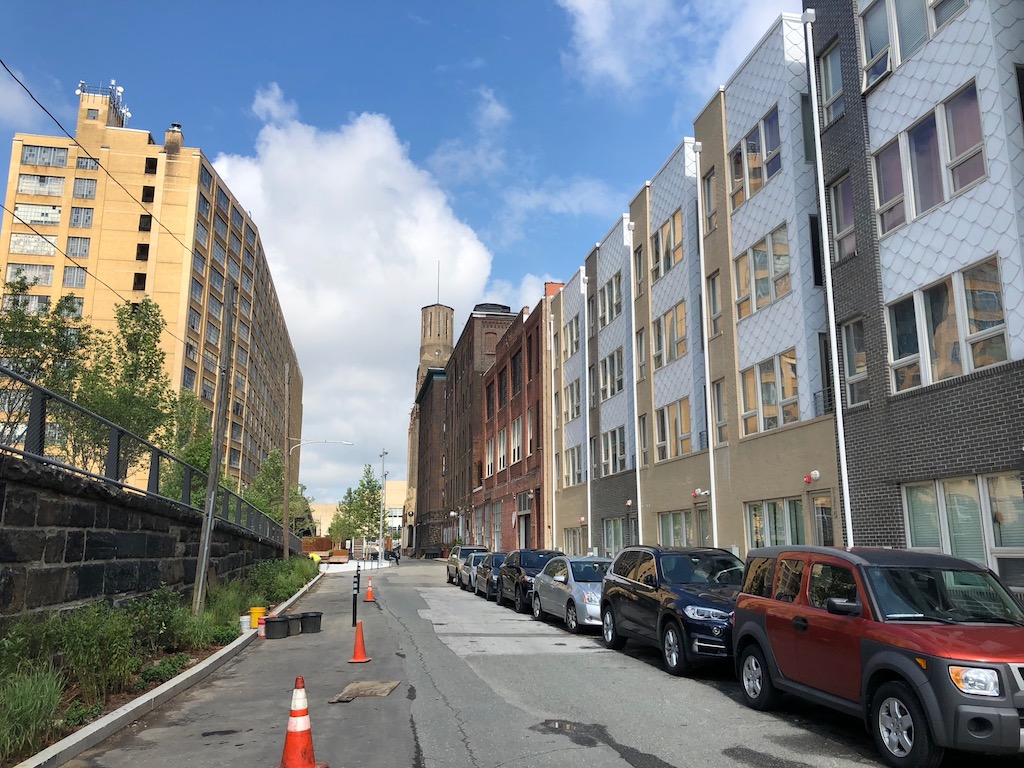
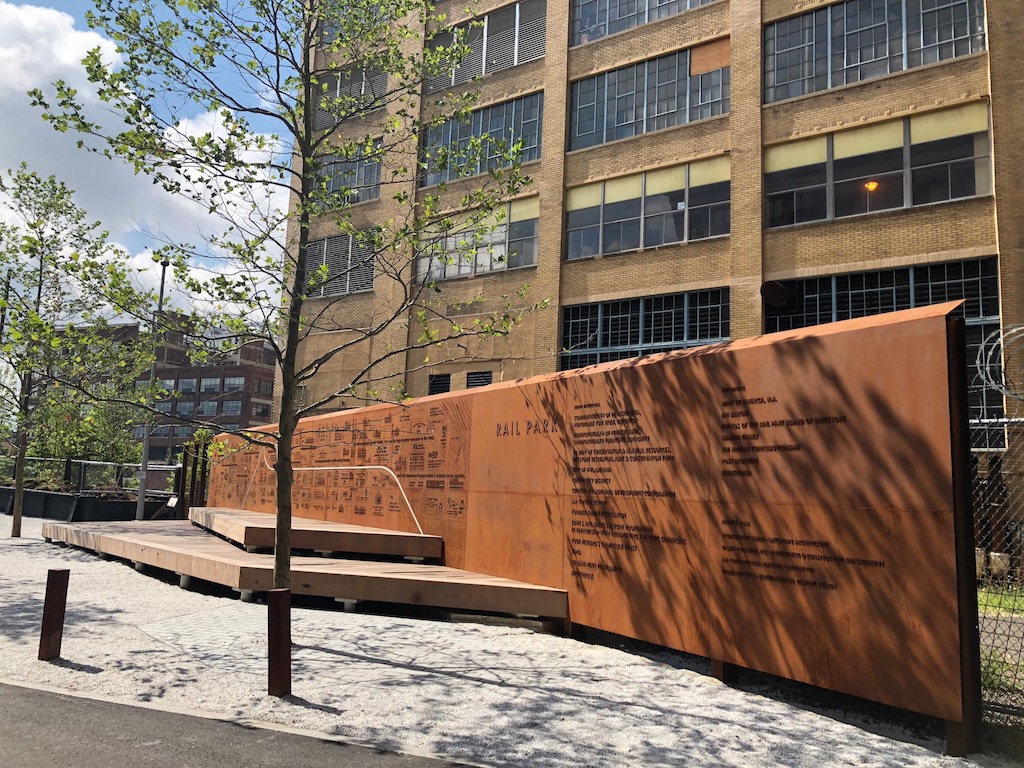
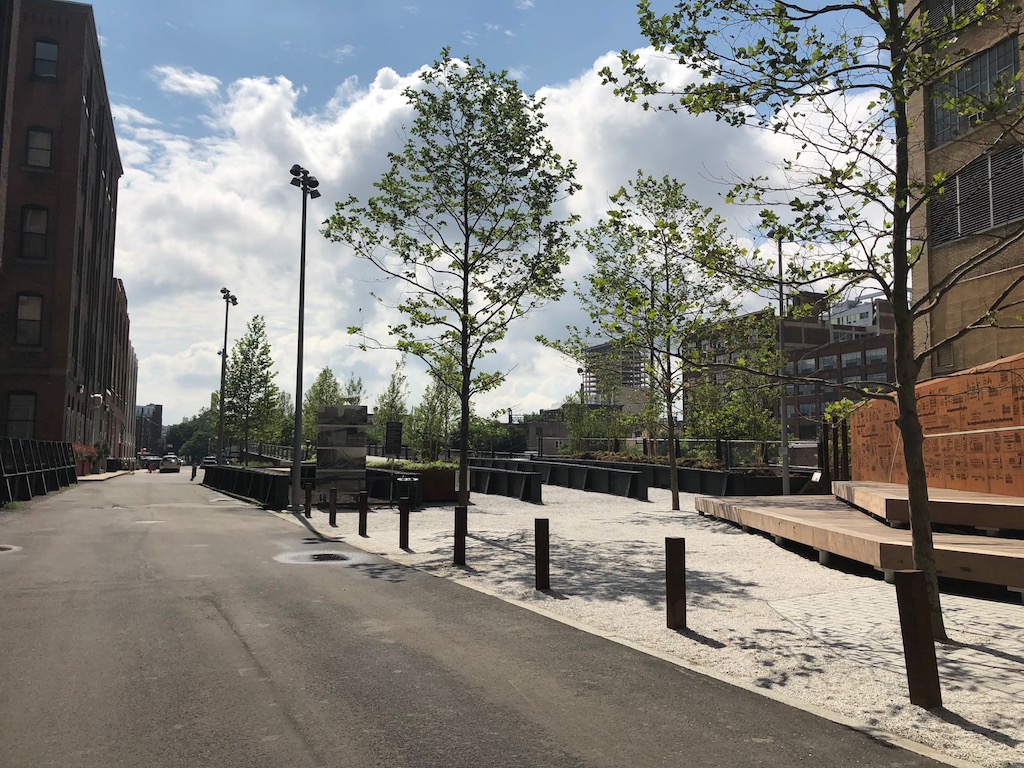

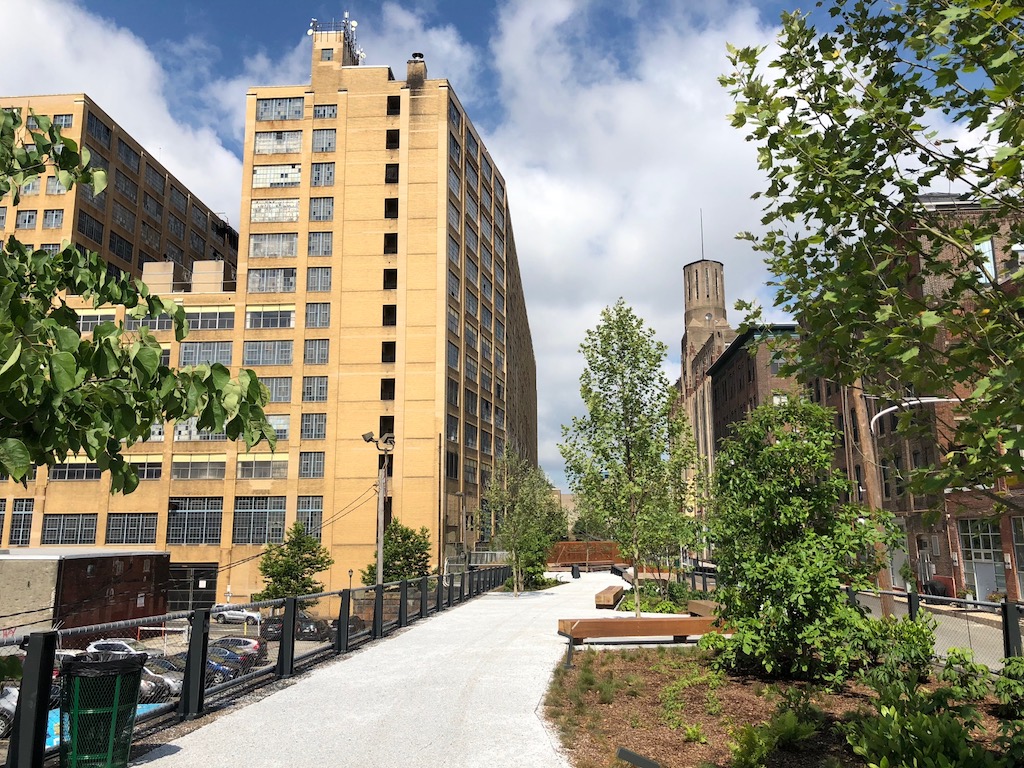





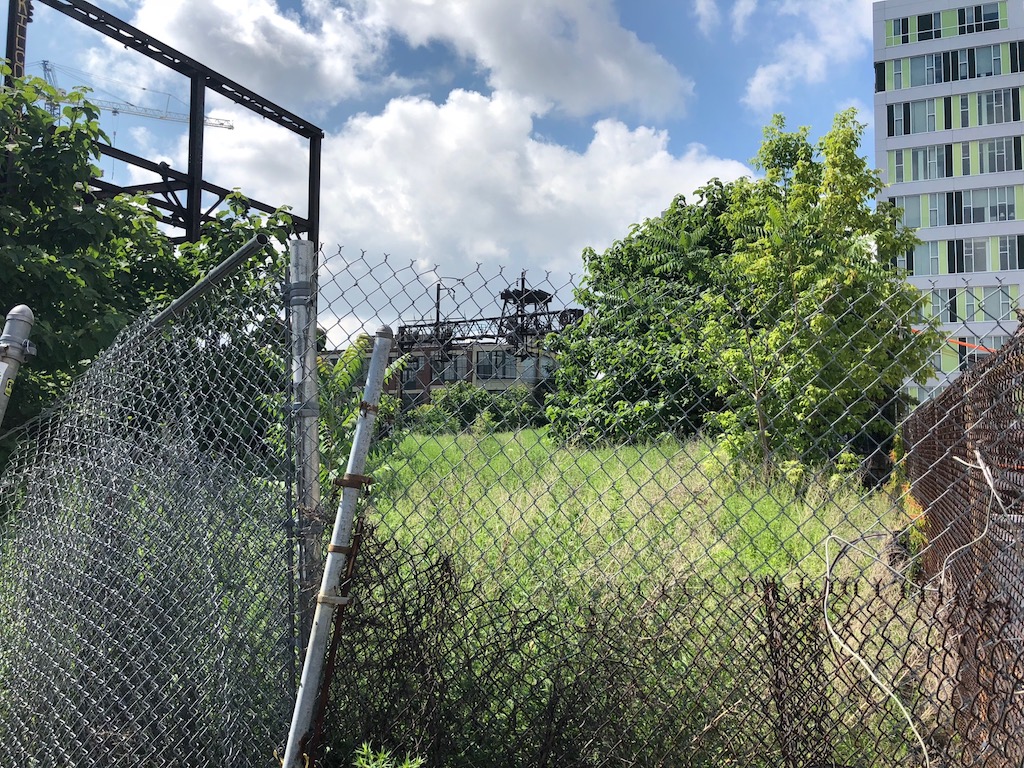
Okay, so it may take a few years before shade becomes a thing here, but it’s otherwise a tremendous public space that will surely encourage new people to visit this neighborhood and some people to move here. And that’s kind of the rub, when it comes to future plans for the Rail Park. A story from WHYY details the somewhat fraught process that got us to this point. To oversimplify, groups like Center City District and Friends of the Rail Park have been largely focused on creating the park itself, while others, including the Philadelphia Chinatown Development Corporation, are concerned about the ways in which the park will change the surrounding neighborhood, with housing affordability as a major concern. From our reading of the story, it seems likely that inclusiveness will be high on the priority list in developing future phases of the Rail Park.
Neighbor concerns about future phases of a Rail Park aren’t the only barrier though. The first phase of the park was created on a section of rail line owned by Septa, and Septa has been incredibly cooperative with the City through the process. The wilderness beyond the rusty gate in the image above is owned by a company called Reading International, an entity that sprang from the ashes of the Reading Railroad and does business in the real estate and entertainment industries. Toward the end of the Rendell administration, Reading wanted to pay the City $2M to take the viaduct off its hands, per a story from Billy Penn. It seems they’ve come around that their property is worth more than negative two million bucks in the interim, so any future use or purchase of their property will need to be negotiated and will likely involve either a long term lease or an outright purchase. Seems likely to cost a pretty penny.
Addressing ownership of the next phase of the viaduct sounds like an issue for another day, though. For now, we encourage you to go check out the first phase of the Rail Park, and maybe take a walk around the neighborhood while you’re in that neck of the woods. Callowhill is home to a bunch of old industrial buildings and some businesses that you might have never heard of, and a new green space is a great excuse to explore a new part of the city. Just make sure you wear a hat or pack some sunscreen.

Leave a Reply